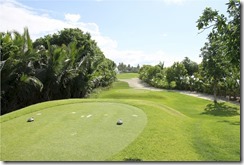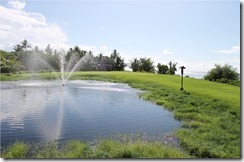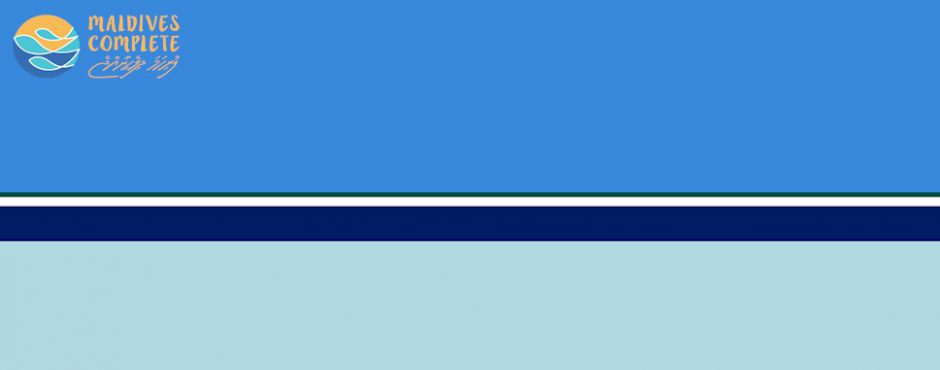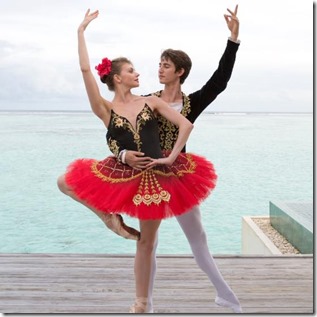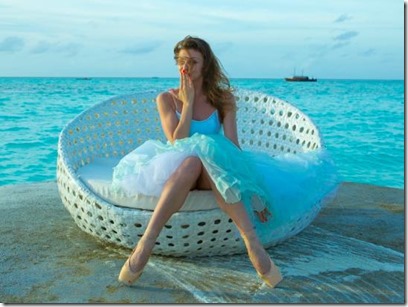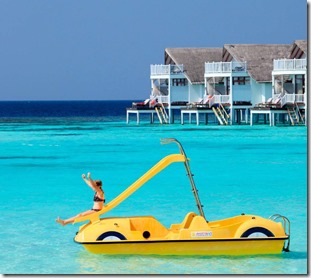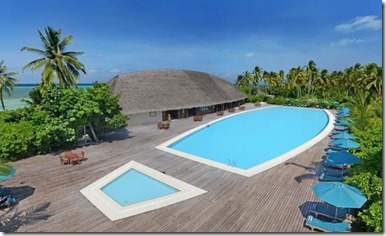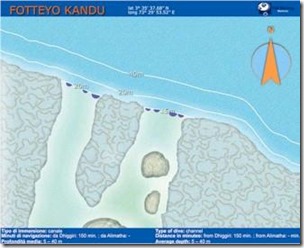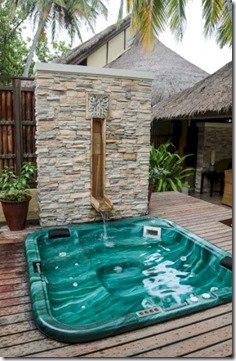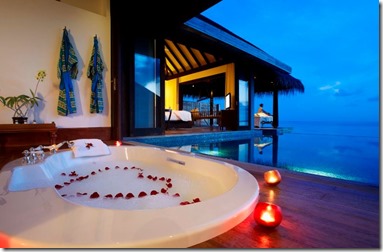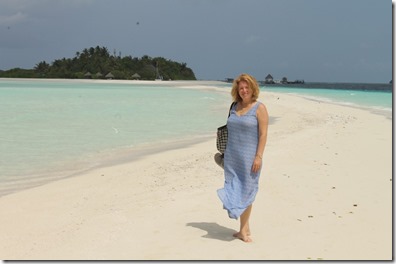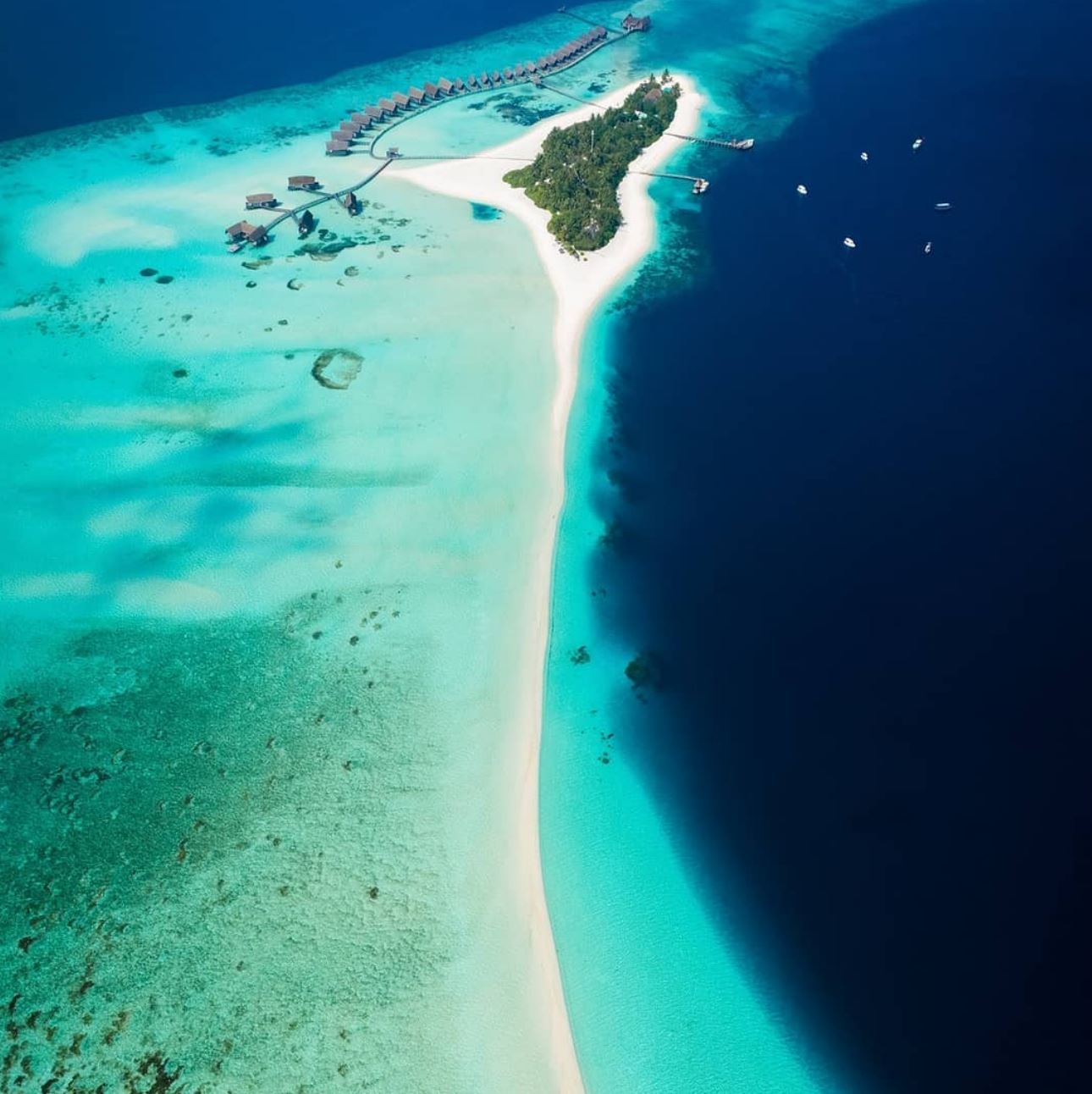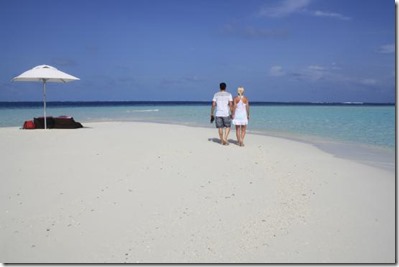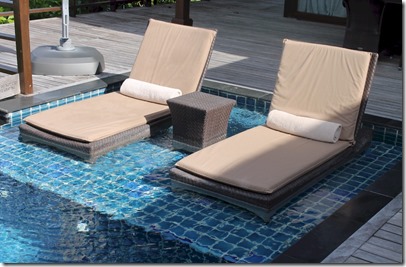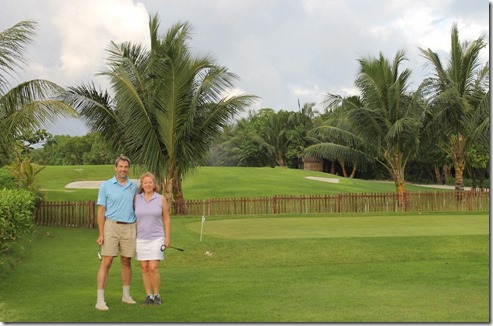
“Golf is a good walk spoiled” – Mark Twain
And if you are going to “spoil” your walk, you might as well make it a great one along the coastal beauty of Maldivian paradise. According to Shangri-La Villingili (and I haven’t been able to find any examples to contradict them), their 9-hole golf course is the *only* course in the world where *every* hole is on the ocean. Of course, Scottish links are the world showcases for links play, but even the legendary St. Andrews only has its front nine on the ocean (the back nine returns inland).
I love it when Maldives resorts push their activities out to the ocean. For years, the “activities” (eg. spas, fitness centres, sports areas) were sequestered in the middle of the island. I guess this made use of this interior and they figured that people would be so busy doing their thing that they wouldn’t need breath-taking views. But the whole point of doing these activities on holiday in the Maldives is to enjoy them *with* the bonus of the enchanting ambiance. Now, the top properties put their spas and gyms and other activities right on the water which lured people to the destination in the first place.
During our Tour visit to Villingili this summer, Lori and I actually got to play a proper round of golf on this distinctive course. As I noted in my tour report, it might be just a par 3 course, but it is still a serious course – seriously laid out, seriously challenging, seriously beautiful surroundings and seriously fun. Not our best round of playing (see Twain quote above), but certainly one of the most spectacular rounds we’ve ever played.
The course does require a very precise approach game as the fairways are narrow (limited real estate) and unforgiving (eg, the big, blue ocean looming to the right of every shot). Elite golf these days is all about the approach. Everyone on Tour can drive plenty far enough with accuracy, but the birdies are made on heroic approach shots landing close to the pin or heroic putts from further away from the pin (and the former are a bit easier to achieve for a pro).
Also during our stay, I had a chance to meet one of the course designers and architect, Kai Smit, and ask him a few questions about this Olympic calibre course. As the Rio Games finish up today (including the first ever Olympic Golf Tournament), here is an in depth look at Maldives’ own tropical golf course…
• What was the inspiration to build a golf course on such limited space?
The southern tip of Villingili Island was undeveloped and the location where the Project Contractor Dormitory was located. This parcel of land was also the logistics centre for materials and equipment that had to be imported to construct the Hotel. It also served as a centre for project waste collection before shipped off the island. The Challenge was twofold, namely 1) to restore the natural habitat and environment to be consistent with the rest of the Island and 2.) try to introduce a value added recreational activity for Resort Guests without harming the environment. The orientation and scale of the peninsula lent itself to be a superb 9 hole – Par 3 Golf Course. Providing a pleasant walk at Dawn and Dusk. All Golf Holes could be routed alongside the ocean, creating 9 greens next to water and ensuring that when playing at dawn or dusk – the players did not look into the sun on the first five outward holes and the last three inward holes. The only hole that the player may look into the sun at Dawn is the signature 6th Hole that faces eastward – and what a sight that can be!
• What was the biggest challenge to building the course?
The limited supply of sand and elevation of the land . Neap tide also presented some challenges as the course is low lying and the eastern shoreline on the peninsula can experience some rough sea conditions.
• What is your favourite hole?
The signature 6th Hole with the ocean backdrop of breaking waves.
• Any tips for playing for course?
Ensure that you have enough golf balls and stay out of the ocean. Generally, the course favours the player hitting a draw as opposed to those players who like to shape the shot from left to right. Below is a photo tour of the course with the overall layout map directly below, with the individual hole layouts below that. Then following is each of the (a) tee shot views, and (b) green views.
Clubbing at its best!

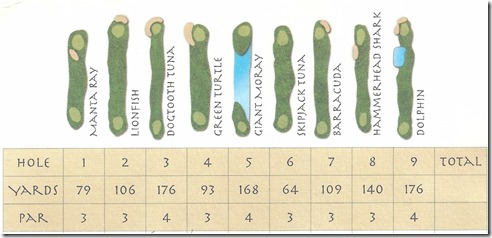
(click on picture for a zoom in)
1st HOLE
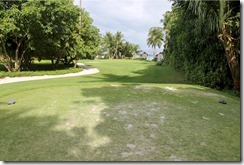
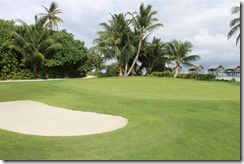
2nd HOLE
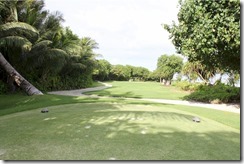
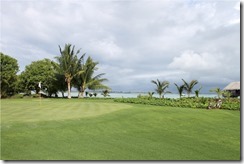
3rd HOLE
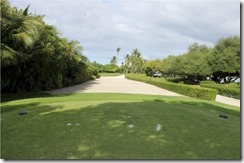
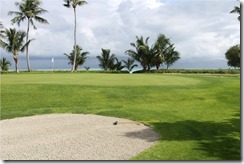
4th HOLE
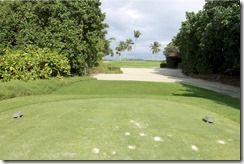
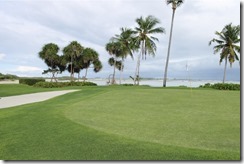
5th HOLE
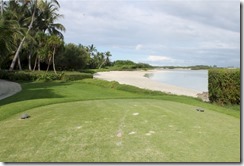
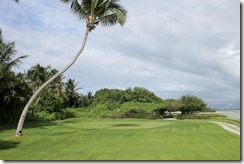
6th HOLE
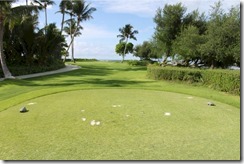
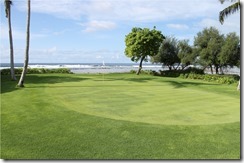
7th HOLE
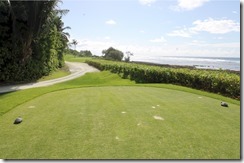
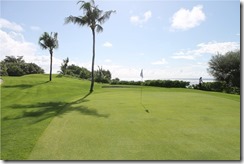
8th HOLE
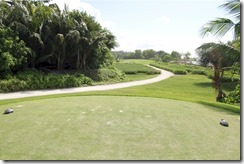
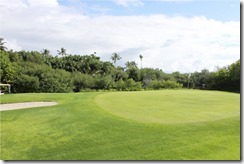
9th HOLE
